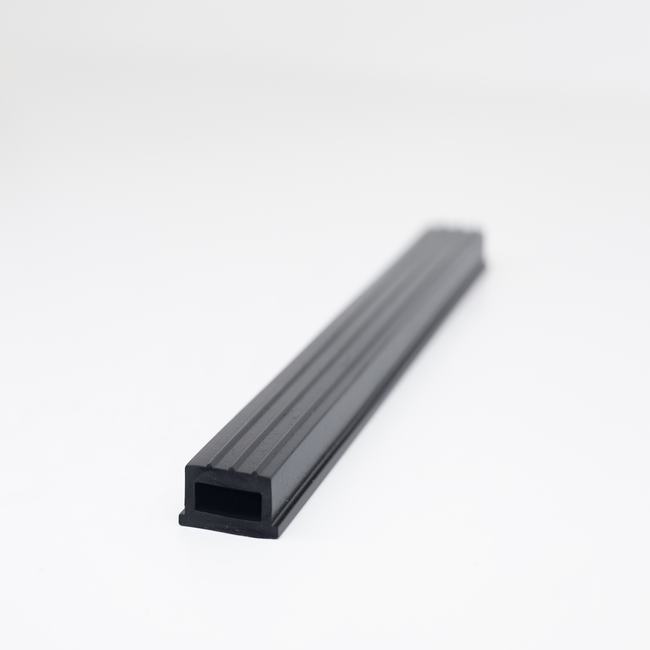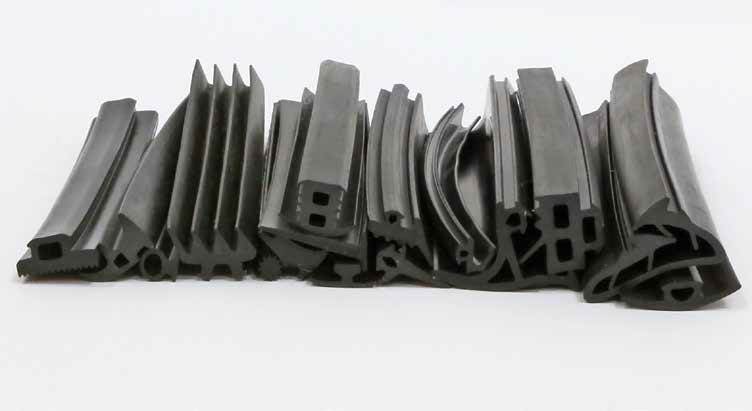Industrial seals are essential components in a wide range of applications across various industries, including manufacturing, automotive, aerospace, oil and gas, construction, and many others. These seals serve the critical function of preventing the leakage of fluids or the ingress of contaminants in mechanical systems. This comprehensive description will delve into the types, functions, materials, and applications of industrial seals.
Types of Industrial Seals:
- O-Rings: O-rings are one of the most common types of seals. They are circular, ring-shaped elastomeric seals that fit into a groove and are compressed between two parts to create a secure, leak-tight seal. O-rings are versatile and can be used in a wide range of applications.
- Gaskets: Gaskets are flat, often soft, and flexible seals that are placed between two surfaces to prevent the escape of fluids or gases. They come in various materials, including rubber, cork, and metal, depending on the application.
- Mechanical Seals: Mechanical seals are used in rotating equipment such as pumps and compressors to prevent the leakage of fluids. They consist of two rotating and stationary parts with a sealing face that prevents the passage of liquids or gases.
- Oil Seals: Also known as rotary shaft seals, oil seals are used to prevent the leakage of lubricants or other fluids in rotating shafts. They are commonly found in engines, gearboxes, and other mechanical systems.
- Hydraulic Seals: Hydraulic seals are specifically designed for use in hydraulic systems to prevent the leakage of hydraulic fluid. They include piston seals, rod seals, and wiper seals, each serving a different purpose.
- Pneumatic Seals: Pneumatic seals, like hydraulic seals, are designed for use in pneumatic systems. They prevent air leakage and are often found in pneumatic cylinders and valves.
- Lip Seals: Lip seals are commonly used in automotive applications and feature a flexible lip that contacts a rotating shaft, creating a dynamic seal. They are used to keep contaminants out and prevent the loss of lubricants.
- Diaphragm Seals: Diaphragm seals are used to isolate pressure instruments from the process they are measuring, ensuring the integrity of the measurement. They consist of a flexible diaphragm that separates the instrument from the process fluid.
Functions and Benefits:
- Leakage Prevention: The primary function of industrial seals is to prevent the leakage of liquids or gases, which is crucial for maintaining the efficiency and safety of various mechanical systems.
- Contaminant Exclusion: Seals keep out dust, dirt, moisture, and other contaminants that can degrade the performance and lifespan of equipment and machinery.
- Environmental Protection: Seals are used in systems where exposure to harsh environments, such as extreme temperatures or corrosive substances, could cause damage. They act as a barrier to protect the internal components.
- Energy Efficiency: Seals, when properly designed and maintained, contribute to energy efficiency by reducing fluid losses in hydraulic and pneumatic systems and by preventing air leaks in pneumatic systems.
- Friction Reduction: In some applications, seals are designed to minimize friction and wear, enhancing the performance and longevity of mechanical systems.
- Temperature and Pressure Resistance: Depending on the material used, seals can withstand a wide range of temperatures and pressures, making them suitable for diverse industrial environments.
- Maintenance and Reliability: Well-designed seals require minimal maintenance and contribute to the reliability and longevity of equipment, reducing downtime and maintenance costs.
Materials for Industrial Seals:
Seals are manufactured from a variety of materials, each chosen based on the specific requirements of the application. Common seal materials include:
- Rubber: Natural rubber, synthetic rubbers (e.g., Nitrile, Neoprene, and Viton), and silicone rubber are frequently used for their flexibility and resistance to various fluids.
- Plastics: Materials like PTFE (Polytetrafluoroethylene), PEEK (Polyetheretherketone), and UHMW (Ultra-High Molecular Weight Polyethylene) offer excellent chemical resistance.
- Metal: Stainless steel, brass, and aluminum can be used in metal seals, especially in high-temperature or high-pressure applications.
- Composites: Composites combine multiple materials to provide a balance of properties, such as flexibility and strength.
Applications of Industrial Seals:
Industrial seals find applications in a wide range of industries and systems, including:
- Automotive: Seals are used in engines, transmissions, and brake systems to prevent fluid leaks and contamination.
- Manufacturing: Seals are integral in manufacturing equipment, ensuring the integrity of hydraulic and pneumatic systems.
- Oil and Gas: In the oil and gas industry, seals are used in wellheads, valves, and pipelines to prevent leaks and ensure safety.
- Aerospace: Seals are employed in aircraft engines, landing gear, and hydraulic systems to maintain the reliability and safety of aviation systems.
- Construction: Seals are used in construction machinery, such as cranes and excavators, to prevent hydraulic fluid leaks and ensure safe operation.
- Chemical Processing: Seals are essential in chemical processing plants to prevent chemical leaks and ensure the safety of workers and the environment.
- Marine: Seals are used in ship engines and hydraulic systems to maintain the integrity of marine equipment.
- Medical Devices: Seals are used in medical equipment to ensure the integrity of fluid and gas pathways, critical for patient safety.
In conclusion, industrial seals are fundamental components in numerous applications, serving the vital function of preventing leaks and protecting equipment, machinery, and processes in a wide range of industries. The choice of seal type and material is carefully considered to meet specific requirements, ensuring the efficiency, safety, and longevity of mechanical systems and processes.





